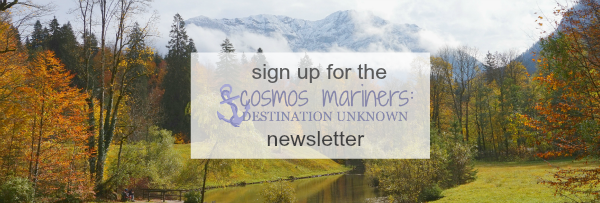8 Historic Houses to Add to Your Italy Itinerary
Although I love learning about history while traveling, not all history-themed attractions are created equal. If you find museums are impersonal or overwhelming, consider visiting a historical home or two on your next visit. Not only are they more personal since you get to learn about the people who lived there, but they also give you a much more approachable way to learn about history since you can see (and sometimes touch) the things that made up life decades or centuries ago.
When planning a visit to Italy, it's natural to be drawn to places like the Colosseum and canals of Venice, but these don't give a complete picture of what Italian life was like at these points in history--instead, they give you glimpses into each time period. These 8 historic homes, which are scattered across Italy, span the country's history and are a fabulous way to delve into the past in a very personal way.
Herculaneum
 |
| {photo via flickr | creative commons} |
Importance: Instead of just one historical house, you get an entire village at this location. Smaller and less famous than Pompeii, but still equally as interesting, Herculaneum was destroyed in the same volcanic eruption. Unlike Pompeii, much of the original timber and building materials still remain in Herculaneum, so walking through this World Heritage Site gives visitors an excellent representation of what a town would've looked like in the first century CE.
Castle of Donnafugata
 |
| {photo via flickr | creative commons} |
Importance: If the name (which means "the woman who fled") isn't enough to grab you, perhaps the legend behind the castle is. The widow of the King of Aragon, Queen Blanche, used the castle as a refuge from a count who was pursuing her for marriage. She only left the castle when the count captured it, later fleeing to a palace in Palermo. Whether the story is true or not (and whether the castle's name was derived from this story), the castle as a historic home remains worth visiting. Get your camera ready for the views from the terrace!
Museum Deleddiano
Location: Via Grazia Deledda, 42, NuoroImportance: This was the birthplace of Grazia Deledda, an Italian writer who won the Nobel Laureate in Literature in 1924. You can wind through the home's three stories and read letters from the famed author. Deledda's daughter-in-law has curated much of the collection, which provides an intimate look into Grazia's life and the home interiors popular around the time of her birth (1871).
Palazzo Spada
 |
| {photo via flickr | creative commons} |
Borgo Castello
 |
| {photo via flickr | creative commons} |
Importance: Part of the royal residences of the Savoy dynasty, Borgo Castello has 18 rooms open to the public. Originally, this property was where the Savoy rulers would come to hunt and relax from the 1850s onward. In the 1880s, the property was sold by the royal family to private citizens and was later turned into a World Heritage Site. Borgo Castello is located in La Mandria park, where wild boar and reindeer still roam.
Keats-Shelley House
 |
| {photo via flickr | creative commons} |
Importance: After Romantic poet John Keats was diagnosed with tuberculosis, he left his home in England and journeyed to Rome, where the drier, warmer air was supposed to help relieve his symptoms. Sadly, he died at the age of 25 in this house, attended by his friend and fellow poet Percy Bysshe Shelley. Today, you can see what the house would've looked like at the time of Keats' death in 1821.
Museum of Peasant's House
Location: CorcianoImportance: In direct opposition to the many opulent residences on this list, the Museo della Casa Contadina takes visitors through a simple 4 room home. This structure showcases what rural farmhouse in the early 20th century would've looked like. While it's fun to see some of the over-the-top places that very wealthy people called home, I think it's also important to have a firm grasp on how everyone else lived and worked.
Carlo Levi Museum
 |
| {photo via flickr | creative commons| |
Importance: Italian author Carlo Levi was exiled to Aliano in 1935 and 1936 in response to his work in the anti-fascist movement. While there, he became fascinated with the isolated town and wrote his most famous work, Christ Came to Eboli, a memoir of his confinement. The house where he stayed is now restored, and visitors can view his letters and paintings.
____________________________
This post contains affiliate links. If you choose to purchase through these links, I will receive a small commission at no additional charge to you.
Want even more travel goodness? Sign up for the newsletter and get the latest Cosmos Mariners updates, giveaways, and travel news right to your inbox!



